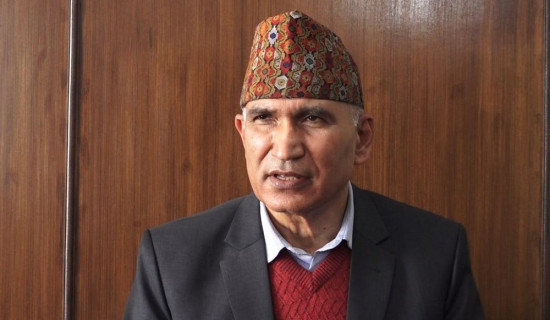- Sunday, 31 August 2025
Climate Change: Secret Driver Of Inflation
When it comes to the topic of climate change, extreme weather events, which have increased in frequency, intensity, and duration in recent years, come to mind. These events often dominate the discussions, overshadowing other subtle impacts and failing to give the big, nuanced picture. However, according to experts, the invisible hand of climate change is also responsible for a lived reality that is equally painful: inflation. Climate change is pushing the cost of daily life in ways that many consumers may not realise.
For the past few years, much of the world has been reeling from the cost-of-living crisis. The monthly income, which once went as far as covering the expenses of 30 days, hardly goes half that period these days. Shoppers complain that they have to borrow money even to buy groceries, while vendors resent that only a tiny fraction of the shoppers who ask the price actually buy the goods. As prices of staples rise sharply, it’s not only the consumers who have been hurt; governments worldwide have also been kept awake at night. When people’s discontent over the prohibitively expensive goods spreads, it risks unrest and protests that may eventually topple the governments.
Cotton crisis
Over the years, the cost of everyday essentials has risen markedly as a result of the impact of climate change. The price of cotton, one of the staple fabrics, has climbed steeply since 2022, when Texas, a state in the USA that is the world’s third-largest producer and the largest exporter, saw its cotton harvest fall massively. As the state experienced a mega drought and heat waves made worse by climate change, farmers there abandoned 74 per cent of their planted crops due to parched soil.
In the same year, Pakistan, the sixth-largest producer, was ravaged by massive flooding attributed to climate change. This destroyed half of its cotton plantation. More such events across the world continue to reduce the supply of cotton, raising the prices of tampons, diapers, gauze pads, T-shirts, pants, shirts and other clothing and hygiene products. By 2040, half of the world’s regions where cotton is grown are forecast to face a high or very high climate risk from drought, floods and wildfires.
Not only clothes, but food is also getting expensive, threatening people’s ability to feed themselves. Climate change is increasingly putting the global food supply under threat. Year 2023 stands as the one India, one of the major food producers and also its biggest exporter, faced a dire shortage of wheat, rice and vegetables. The reason was never-seen-before floods in some parts of the country and usually prolonged drought in other parts. The shortage of tomatoes, one of the country’s culinary staples, was so widespread and acutely felt that it made international headlines.
People faking accidents to stop trucks laden with tomatoes and wholesalers hiring bouncers to prevent theft highlighted how severe the crisis was. As their price rose fivefold, several Indian states turned to Nepal to plug the shortfall. Not only did ordinary people stop buying them in local markets, but big-name restaurants like McDonald’s dropped tomato-heavy dishes off its menu. As the reduced supply of rice and wheat prompted the Indian government to ban their export, the impact rippled across the world. In Nepal, the prices of diverse varieties of rice shot up sharply.
The ban was enacted despite the fact that India had previously assured the world that the gap left by the loss of wheat export from Ukraine as a result of the war would be compensated by India. As weather patterns grow erratic, with rainfalls too heavy, droughts growing in frequency and duration, and heat waves withering crops, abandonment of crop plantation and crop losses are forecast to grow markedly in the future, curtailing the availability of food and hiking their prices.
Shortage of chips
What’s more, even consumer goods like electronics aren’t spared. In 2021, Taiwan, the world’s leading manufacturer of semiconductor chips, was in the grip of the most severe drought in over half a century. The country didn’t even see the usual typhoons that, in normal times, replenish its depleted water sources – something linked to climate change. The combination of these factors created a water shortage so dire that even people stopped bathing, and water rationing was enforced. It also dented the production of chips used in cars worldwide. Producing electronic chips is a very water-intensive process. And, as the shortage of such chips grew more acute, their price spiked, hitting the global car manufacturers that relied on that country for the supply. As a result, the prices of cars also rose, dealing a blow to the common people’s prospects of owning a car. However, to their huge relief, as things improved, the prices fell to previous levels.
Climate change is already a harsh reality of life for millions of people worldwide. Only with urgent climate action can we put the brakes on its relentless march, saving people not only from catastrophic weather events but also from the painful experience of not having the wherewithal to buy daily essentials.
(The author is a journalist at The Rising Nepal.)














-original-thumb.jpg)
